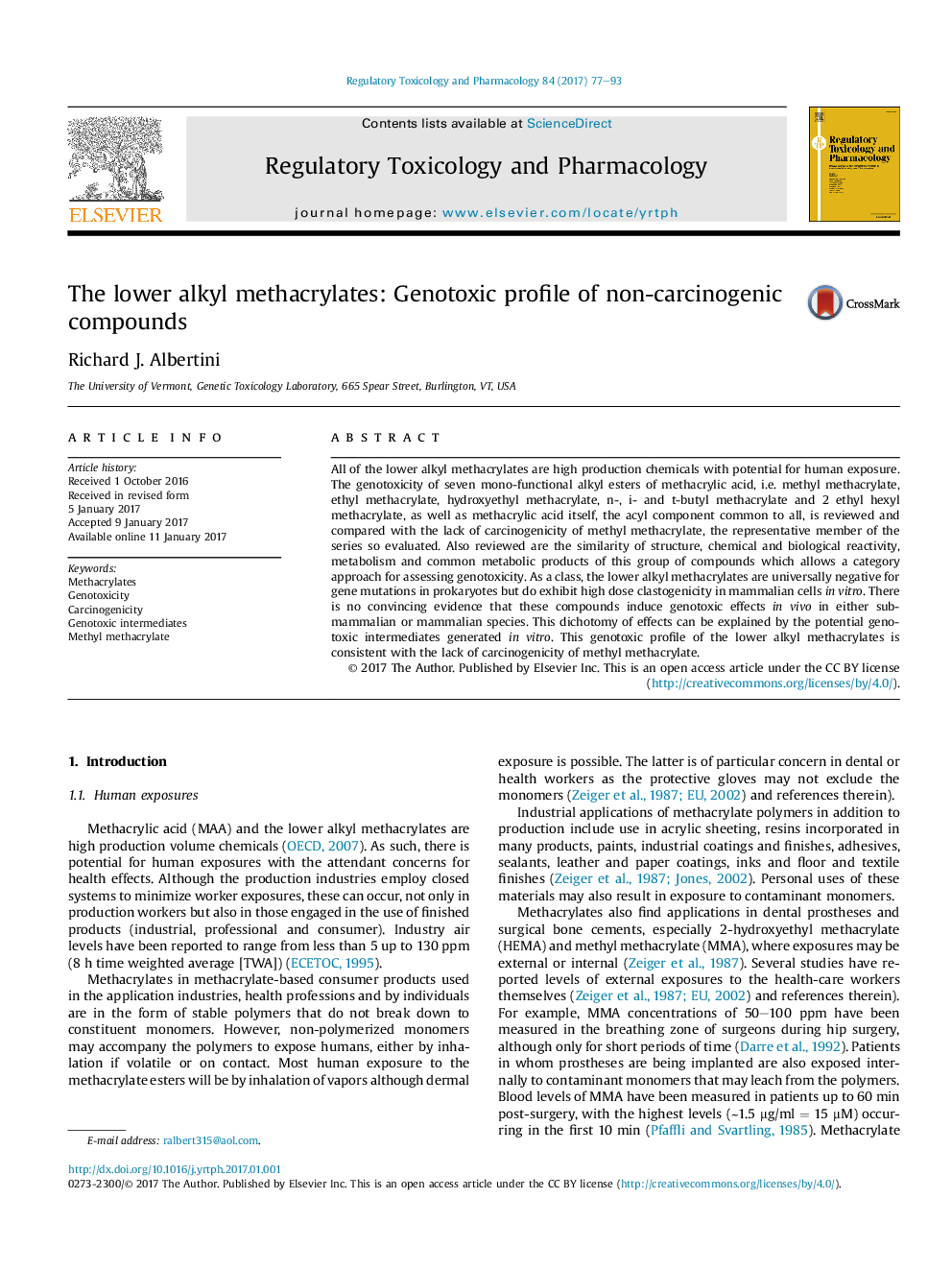| Article ID | Journal | Published Year | Pages | File Type |
|---|---|---|---|---|
| 5561404 | Regulatory Toxicology and Pharmacology | 2017 | 17 Pages |
â¢Lower alkyl methacrylates are high-dose clastogenic compounds only in vitro.â¢No convincing evidence that the lower alkyl methacrylates are mutagenic in vivo.â¢Genotoxic intermediates of metabolic detoxification are consistent with the in vitro - in vivo differences in mutagenicity.â¢The genotoxic profile of the lower alkyl methacrylates would have predicted the lack of carcinogenicity.
All of the lower alkyl methacrylates are high production chemicals with potential for human exposure. The genotoxicity of seven mono-functional alkyl esters of methacrylic acid, i.e. methyl methacrylate, ethyl methacrylate, hydroxyethyl methacrylate, n-, i- and t-butyl methacrylate and 2 ethyl hexyl methacrylate, as well as methacrylic acid itself, the acyl component common to all, is reviewed and compared with the lack of carcinogenicity of methyl methacrylate, the representative member of the series so evaluated. Also reviewed are the similarity of structure, chemical and biological reactivity, metabolism and common metabolic products of this group of compounds which allows a category approach for assessing genotoxicity. As a class, the lower alkyl methacrylates are universally negative for gene mutations in prokaryotes but do exhibit high dose clastogenicity in mammalian cells in vitro. There is no convincing evidence that these compounds induce genotoxic effects in vivo in either sub-mammalian or mammalian species. This dichotomy of effects can be explained by the potential genotoxic intermediates generated in vitro. This genotoxic profile of the lower alkyl methacrylates is consistent with the lack of carcinogenicity of methyl methacrylate.
